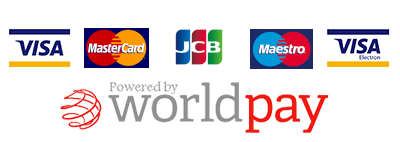
Maybe you are a client and this is your first attempt at working with someone remotely. Are you worried about how you are going to get all this information stored in your head and on your files handed over to someone you may have never met in person? Maybe you are the one taking on a new customer and are worried whether you will capture all the right information?
Well, with this handy Customer Onboarding guide, there leaves no room for concern. Here, we will take you through the Best Practices to ensure quick, seamless and successful Customer Onboarding leaving both parties confident they will hit the ground running.
What is Customer Onboarding?
Customer Onboarding is the initial process of inducting new clients to your service. Not only should this process demonstrate your exceptional standards, professionalism and expertise, it should also equip you with all the required access, information and tools required to deliver your service.
Best Practice Process List:
1. Plan and Be Prepared
Always be prepared! Think about what information you need for a successful Onboarding Session. This will be specific to your industry but the basics apply across the board. When gathering your information, you will need to obtain data in the 3 following areas:
- Access: What systems, documentation and processes do we need to support the customer?
- Needs and processes: What support do they need? Frequency? Volume? Etc
- Preferences: How do they like things done?
We find applying the Why? What? When? Where? How? questions to the above areas helpful when planning and preparing.
A few examples:
Why do you need my/our service? What specifically is it that you need help with?
What have you not thought about that I can help you with? What do I need from you to achieve this?
When do you need support? When do your regular tasks occur?
Where do you need support (location)? Where do you store information?
How do you currently do certain tasks? How often do you need help / do your tasks occur etc?
2. Create a Template for your Information Gathering
To ensure you capture the right information create a well thought-out and laid-out template. By having all the questions to hand you will speed through onboarding and you may also establish areas of inefficiency that you can work to improve.
As a provider of remote business support, we looked at the 3 areas
- General business handling
- Document production
- File storage
- Travel
- Finance
- Social media
- Email and diary management
- Inbox management
- Telephone handling
- Useful contacts
- Payment information
3. Walk in your Customer’s Shoes
Before arranging your onboarding session, step into your customers shoes for a minute. They could well be thinking:
- I don’t have time to dedicate to this
- I don’t have any processes, or think I have much of the information I think they will require to onboard me
- All the information is in my head
- It makes me nervous to think I’m handing over control
- I’m reluctant to change
- I’m not sure I’m comfortable with this, not having done it before
Think about what you need to do to release these fears.
4. Arrange your Onboarding Session via Email
Following the above section, this is where you indirectly address all those potential thoughts running around your customers head. The email should clearly outline the expectations of the onboarding session, so in our case, this would be:
- Defining the support they require and frequency
- Understanding of processes, SLAs and documentation
- Extracting preferences and brand guidelines
- Obtaining all access information
Ask the customer to consider areas that will make onboarding quicker if they can give it some thought beforehand. Again, in our case, this would be:
- What tasks do you need managing on a daily/weekly/monthly basis?
- What processes and procedures do you need to tell us about?
- What access do we require – Email/ Calendar/CRM/Finance Systems etc
Throughout the email, your tone should be friendly, yet professional. Make it clear that the intention is to onboard as quickly and seamlessly as possible and of course, that you look forward to working with them!
Don’t forget to fix a date for the Onboarding Session via Skype.
5. Deliver the Onboarding Session in Person, via Skype (or similar) or over the Phone (at the very least!)
If you work remotely you will be aware it can be daunting to a prospective customer to engage in a service with someone they have never met. Your customer needs to see and hear you to build that trust. Either in person or via Skype (or similar) is the best way to conduct your onboarding session- but at the very least pick up the phone. Never onboard over email. It will take longer to onboard and even longer to build trust.
6. The Day of Onboarding
Refresh (if you need to) your knowledge of the business, revise your templates and notes to be sure you have all the information covered. Don’t allow for any distractions – this is an important meeting and these first impressions count! Be positive, wear that smile and enjoy the meeting.
7. Act on the Information – Fast!
So, you have all the information. Now what? Step on it as soon as you possibly can to get all that information typed up in an operations guide, stored accessibly, accounts activated (whatever it may be to get you ready to start). Whilst it is fresh in your head is the best time to do it. You should aim to have you client ‘fully onboarded’ within 24-48 hours.
8. Send your Customer an Overview
Go back you to your customer with an overview of everything that has been discussed and give the customer an opportunity to confirm you have it recorded accurately (it’s always good to have it in writing!). Note any actions that need to take be taken on either their or your behalf and make sure they get actioned. Agree a start date – usually immediately, or when outstanding information is finalised!
9. That’s It!
Enjoy your new customer experience!
By following the above steps, you will demonstrate to your customer that you have exceptional standards, professionalism and expertise in your area. In turn, they will be reassured, relieved, and excited about working with you.
Remember: Successful onboarding leads to accelerated productivity, improved client retention and greater client satisfaction!
SmartPA works with individuals, SMEs and Corporations providing remote, PA Secretarial and Business Support services. Contact us for more information.




